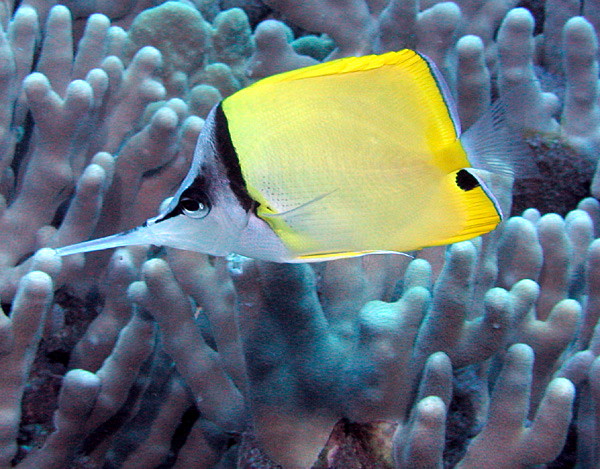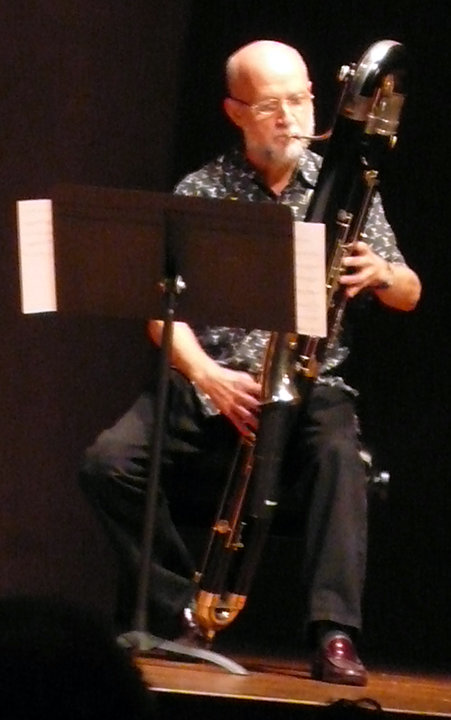Unaccompanied Contrabassoon, 4m30s
The Lauwiliwilinukunuku’oi’oi is a fish found in the coral reefs of Hawai’i. It’s name translates to something like ‘Long-nosed fish that flutters about like a leaf.’ Despite the low, heavy nature of the contrabassoon, the music retains the capricious, fluttering quality, and the energetic vivacity, of its namesake fish. The title is also a reference to the first known work for unaccompanied Contrabassoon, “Bass Nightingale” (1922), by Erwin Schuloff.
Phil Gottling, a professional bassoonist based in Honolulu and a friend of mine, asked me to compose him a piece for unaccompanied Contrabasson. The composition makes use of an ingenious instrument extension designed by Gottling which extends the range of the contrabassoon down to a low A. In this way, the instrument also comes to have a long nose. (The extension is optional, and ossia parts are provided for performance without it.)

Photo Courtesy of Clark Anderson/Aquaimages. Used via the Creative Commons Attribution Share-Alike 2.5 Generic Liscence.
Above: a Lauwiliwilinukunuku’oi’oi.
Below: Phil Gottling (not a fish) performing the piece in April 2010. The A-extension tube is covered in black paper to match the Contrabassoon body. It blends in, but can be seen in the photo.

Photo courtesy of Norm Foster. Do not redistribute.
Contrabassoon with optional Low-A Extension
